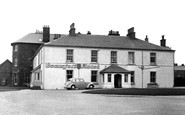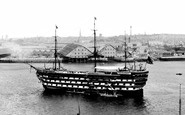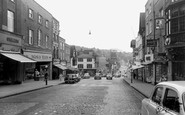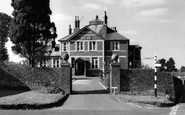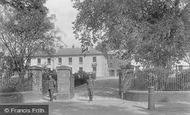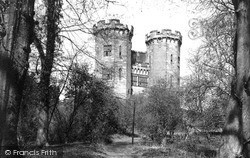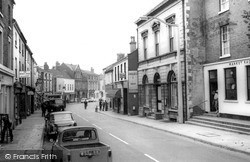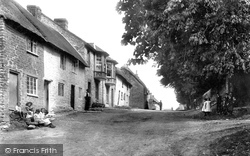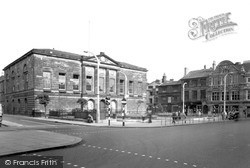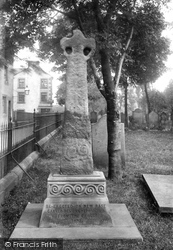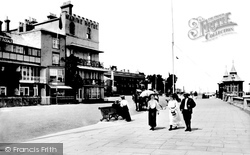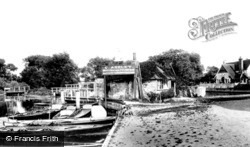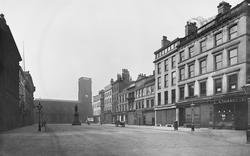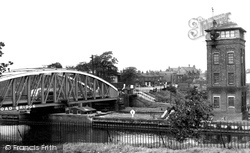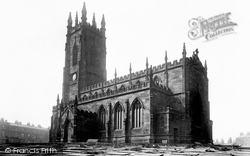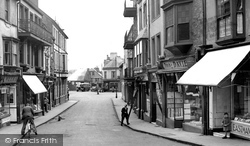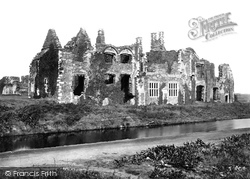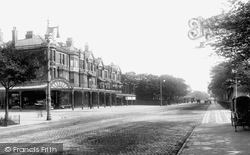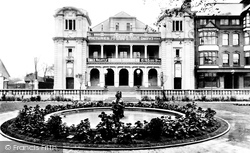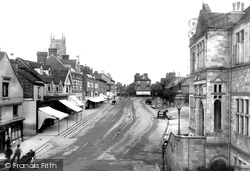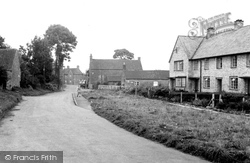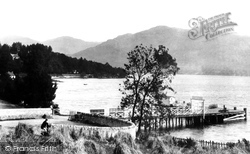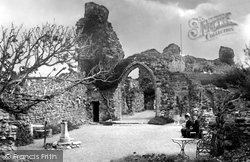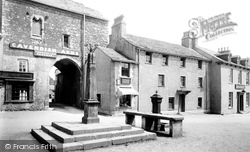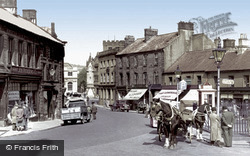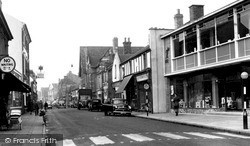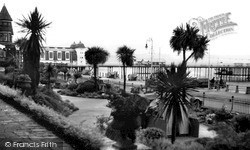Places
18 places found.
Those places high-lighted have photos. All locations may have maps, books and memories.
- Hythe, Kent
- Hythe, Hampshire
- Small Hythe, Kent
- Bablock Hythe, Oxfordshire
- Methwold Hythe, Norfolk
- Hythe, Somerset
- Hythe, Surrey
- Hythe End, Berkshire
- The Hythe, Essex
- Egham Hythe, Surrey
- West Hythe, Kent
- New Hythe, Kent
- Broad Street, Kent (near Hythe)
- Horn Street, Kent (near Hythe)
- Newbarn, Kent (near Hythe)
- Newington, Kent (near Hythe)
- Broad Street, Kent (near Hythe)
- Stone Hill, Kent (near Hythe)
Photos
360 photos found. Showing results 2,921 to 360.
Maps
101 maps found.
Books
10 books found. Showing results 3,505 to 10.
Memories
4,406 memories found. Showing results 1,461 to 1,470.
Film Shows And Waitresses
I was an apprentice at Sellafield in 1957 living in Seascale. In the winter months some of my pals and I would frequent the Scawfell Hotel, but go in the back entrance where we could mix with the young waitresses in their ...Read more
A memory of Seascale in 1957 by
Drakelowe 1947 2003
My family lived at Grove Cottage, Drakelow for 56 years. I was a few weeks old when we moved fromm Orgreave. At that time there was our parents, me, and four older sisters, the eldest being 15. My dad Arthur Taylor went to ...Read more
A memory of Drakelow by
The First Annual Flower Show
In 1938 Wood Street village enjoyed their first Annual Flower Show . My father, Arthur Stock was a driving force in promoting this event. he was later presented with a chiming clock inscribed "Presented to Mr. Arthur ...Read more
A memory of Guildford in 1930 by
Strangers Home
I lived with my father Denys and sister Mandy at the Strangers. I have many great memories of Bradfirld and the villagers. Who remembers the likes of Bill Long, George Jones, George Barnes and one I can only remember by the name of Blackie.
A memory of Bradfield in 1959 by
Memories Of Kirkby
I remember my time in Quarry Green, and the white council 2 storey flats next to what we knew as "Spinney woods", and the bus turnaround, the pub called "The Black Swan", and then there was the primary school opposite ...Read more
A memory of Kirkby in 1960 by
Cirencester Abbey Woodchopping Competitions
My Father, Ken Mclennan, was in a Forestry Regiment of the Royal Australian Engineers posted to Scotland at the outbreak of WWII, prior to being deployed to New Guinea to fight the Japanese. Whilst in ...Read more
A memory of Cirencester in 1940 by
Birth Place
My birthday, a very cold day 10th December 1944. My mother had been in a horse and cart delivering milk to the area around Wincanton when the cart turned over into a ditch, this started premature labour and she was taken to ...Read more
A memory of Templecombe in 1944 by
Hythe, School Of Musketry
I used to live in Sir John Moore Avenue, Hythe. This small estate was built on the site of the School of Musketry. We went to Nova Scotia, Canada, to see my wife's family. While there, we visited a tourist attraction. I found ...Read more
A memory of Hythe in 1900 by
Wonderful Childhood
I used to live in Churchfield, my old house is the only one left standing amongst a maze of flats. It was a council house in those days and we shared it with another family, the Caines. I went to Churchfields Primary and ...Read more
A memory of South Woodford in 1950 by
Captions
4,899 captions found. Showing results 3,505 to 3,528.
During the Civil War the castle was ably defended by the Dowager Lady Stafford, but after it had fallen it was ordered to be slighted.
When the author was researching this book (2004), the road (the A631) was almost non-existent as large road works were taking place, which were due for completion by the spring.
A subsequent tenant of the manor house by the church, was Colonel Shrapnel, whose name is forever associated with his explosive invention.
Oblong in shape, it is a fine wide street, its qualities emphasised by the lime trees along each side.
It is now occupied by the Art Gallery and the Library. To the right are the offices of the Paramount Building Society and the Co-operative Insurance Society above the Midland Bank.
Newton's brewery formerly stood adjacent, but by 1911 it had been replaced by the Alhambra entertainment hall, now a cinema.
A yachting agency advertises itself on the left-hand side of the house by the Royal Marine Hotel.
Ashley no longer lets 'Boats by the Week, Month or Season', nor are they 'Housed and Varnished'. This view is from The Swan pub, still in existence.
It was completed in 1712, and by the mid 18th century St Ann's was the fashionable part of town, the place to see and be seen in.
By the early 1950s, exports from Manchester Docks fluctuated at between 4 million and 5 million tonnes a year, while imports varied greatly, with 1959 being the bumper year at 13.5 million tonnes.
Sheffield's churches, chapels and missions ministered not only to the religious needs of the people, but were often at the very centre of community life and fulfilled many of the roles now taken up by the
The building was immortalised by the artist John Constable.
Hodges Garage (in the distance, behind the bus entering Market Square) has since been demolished, and the Castle Hotel (by the street lamp on the right) has also closed.
Although once very wealthy, the abbey was in a state of severe decline by the 1530s, and was thus an obvious target for the Dissolution in 1539.
Early development needed to take into account an area of marshy ground, and in later years land for possible further development was divided into uniform rectangular plots by the landowners.
There was a time when cinema censorship was at a local level, usually performed by the watch committee.
On the right is Constitutional Buildings, a dominating building in the golden local sandstone, built in 1893, now without the steps and the ground floor occupied by the Woolwich and others.
The houses on the right were built by the council not long before the photograph was taken, and from their appearance several are now privately owned.
The loch itself was served by the steamers of the Loch Lomond Steam Boat Company, whose first ship, the 'Prince of Wales', was built at Port Glasgow in 1858.
In 1201 King John declared the English to be masters of the sea whilst he was here - though he had to reduce the fortifications in 1216 to prevent the castle's capture by the French.
The ancient Market Cross and village pump are watched over by the Cavendish Arms (left). Note Mr Overend's tiny one-up-one-down draper's shop to the right.
Horse-drawn transport is still prevalent, but it is about to be phased out by the motorised vehicles which were taking over the streets of the old Cumbrian town.
Further down, past a wool shop, is the large brick-built Kettering Conservative Club, built on a site donated by the Duke of Buccleuch in 1876.
Much of the job of excavating the site had been accomplished by hand, an arduous task necessitated by the close confines of the work and its steep backdrop.
Places (18)
Photos (360)
Memories (4406)
Books (10)
Maps (101)



